I2C is a communication bus that allows devices to communicate with your PC, similar to a USB or Bluetooth connection. One of the practical applications of I2C devices in a Windows PC is for HID devices. HID is short for Human Interface Device. The most known standard is USB-HID, but Microsoft has also implemented I2C-HID. Both allow connecting devices like a mouse, keyboard, touchpad, and trackball, but also gaming devices, like a joystick. And you guessed it, I2C HID device drivers are needed for such devices to function in Windows.
Installing I2C HID Device Drivers
Installing I2C device drivers is the same as with any Windows device driver. Using the Device Manager, find the I2C HID device in the device tree and right-click it to update the driver from the popup menu.
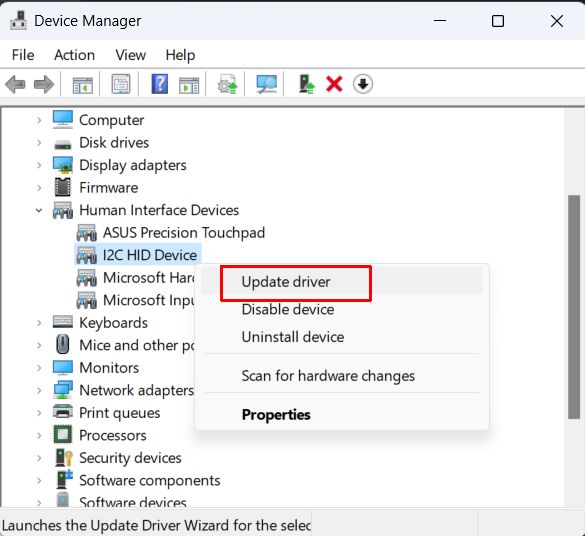
If the I2C HID device has a problem and is not functioning properly, the icon in the device manager will show the device with an exclamation mark.
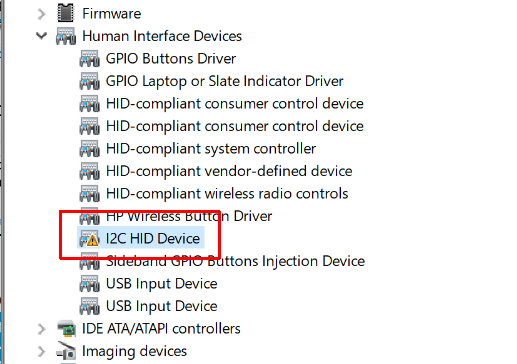
In most cases, this type of error will be solved when the right driver is installed for the I2C HID device.
If the I2C HID device is not showing at all in the Windows device manager, that means Windows has not recognized it as such. The device will then be listed under the Other devices or Unknown devices category.
If Windows directly supports the device, letting Windows automatically locate the driver for the device will work. If a not supported device is found, an external device driver for the I2C device is required. Almost all keyboards and mice are supported directly by Windows. Third-party drivers are mostly required for touchpads, gaming devices, or other non-standard devices.
Finding I2C Device Drivers
The first step in finding a device driver for your I2C device is to look at the manufacturer’s support site. This can be the site for your PC manufacturer (e.g. Dell, HP, Gateway, etc.), but it can also be the site for the device manufacturer (e.g. Synaptics, Elan, Alps).
Start with the PC manufacturer, and look for the device type (input devices). Download the driver installer and execute it to install the I2C HID device driver on Windows.
If the PC manufacturer does not have the right driver, the next step is to try and find the manufacturer of the actual HID device and visit their support site. In the device properties, you can see the manufacturer in the device Details tab (In the screenshot below, “Microsoft” is listed as the manufacturer).
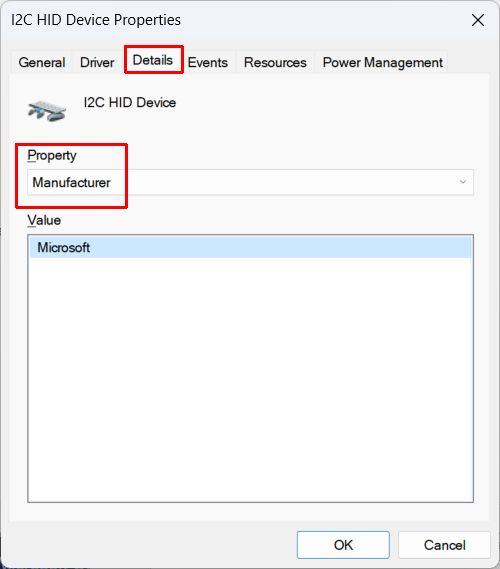
If manually finding the driver for the I2C HID device proves impossible, consider using an automated solution like DriverFinder. The software scans your PCs for all hardware devices and locates the right device drivers for you. I2C drivers can then be downloaded and installed.
Solving I2C HID Device Problems
The steps above will help you find and install the right device driver, but not all problems with I2C HID devices are solved by installing the right driver. The most common error solved by installing the right device driver for an I2C HID device is the Code 10 error (This device cannot start). For other device errors, look at the article on device error codes.
I2C HID Device Power Management
Another potential problem is related to the power management of the I2C HID devices. Allowing Windows to control the power for a touchpad or trackpad has been a cause for problems in some cases. So, if your I2C HID device has recurring issues with not working properly, try the following.
- Open the Device Manager.
- Locate the I2C HID Device under Human Interface Devices.
- Right-click the device, and in the popup menu select Properties.
- Next, select the Power Management tab.
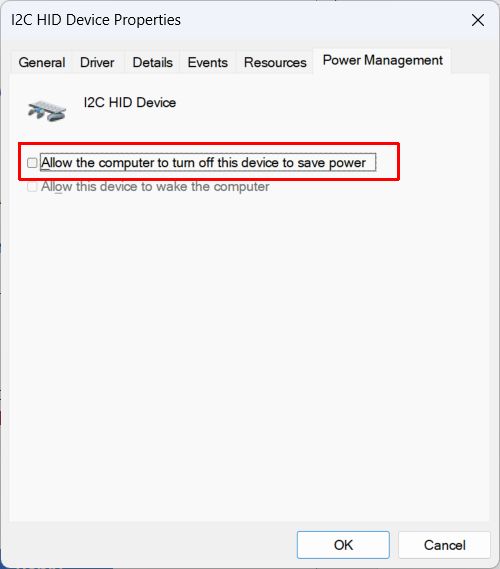
- Clear the checkbox named Allow the computer to turn off this device to save power.
- Click OK.
- Close the Device Manager.
This will disable the power management for the I2C device. Windows can no longer disable the device to save power.
Only leave the option disabled if it actually solves the problem. In normal circumstances, all devices with power management options should be allowed to be disabled by Windows when it is switched to a power-saving mode.
Uninstall I2C HID Device for reset
If these steps do not fix your issue with the I2C HID device, simply try uninstalling the device in the Device Manager. Simply follow the first 2 steps in the power management instructions, but select Uninstall device instead of Properties. Restart the system, and Windows will automatically reinstall the device. This can solve problems related to the device configuration in Windows.
Check HID Service Status
In rare occasions it could be that the I2C device problems are caused by the Human Interface Device Service. This service is required for the HID devices to function properly.
In general it will not need any attention, but if the above steps have not given a solution, the service can be checked.
- Right-click the Start button and select Computer Management.
- In the Computer Management window, select Services and Applications in the left-hand panel.
- Next, click Services.
- Now scroll down in the Services list untill you see Human Interface Device Service.
- The Status should be Running. If not, right-click the Service and select Start in the popup menu.
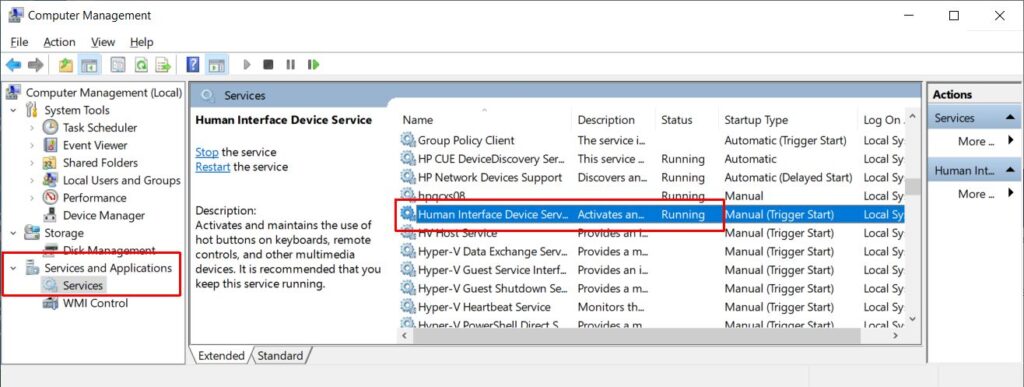
Tip: the services window can also be accessed by typing “services” in the search box on the Taskbar and pressing Enter.

